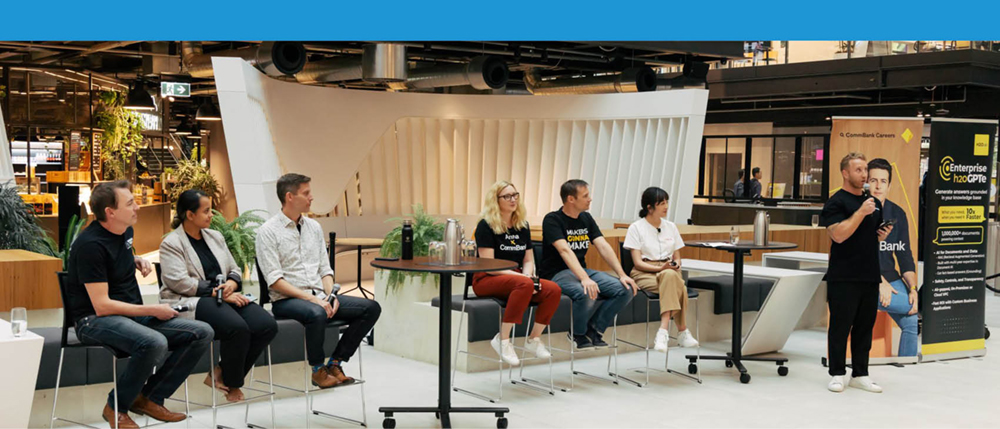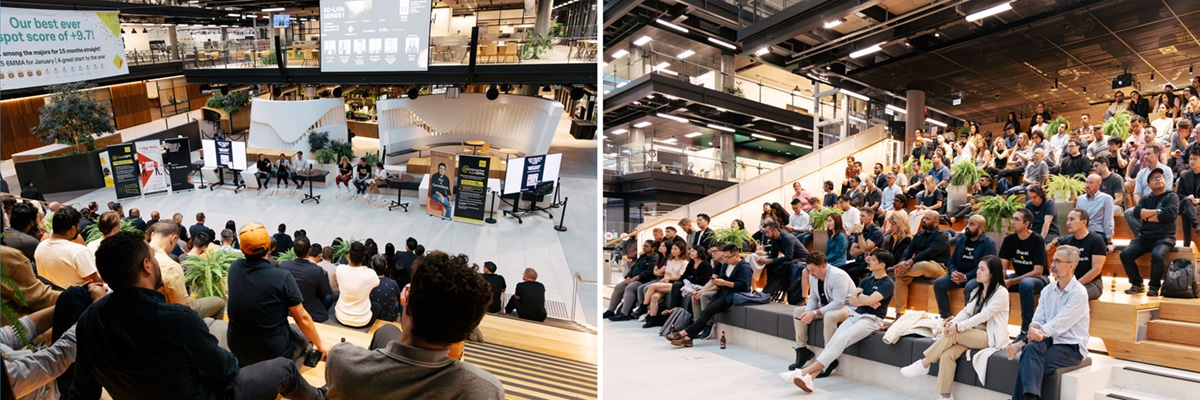Gen AI Wed 17th April, 2024
Balancing business opportunities with responsible innovation in Generative AI
Here’s a fact you probably won’t know about me – I went to the same school as Alan Turing.
I mentioned this while appearing as a panellist at the recent Konnecta Ko-Lab: Series 1 discussion in Sydney. Having attended the same educational institution as one of the founding fathers of artificial intelligence, I guess I was always destined to be interested in AI. It’s a fact that certainly grabbed the attention of the audience.
AI, particularly Generative AI, continues to captivate technologists and business leaders worldwide. During the panel, we dived headfirst into the technical aspects of implementing AI, but some of the more compelling and challenging audience questions revolved around how organisations can balance AI’s opportunities with the concerns surrounding the new technology.
How generative AI is impacting business
Generative AI is reshaping the way we create and consume content. It can enhance customer experience through personalisation, streamline business processes and rapidly generate new creative ideas.
But along with the benefits, there are concerns about how Generative AI is impacting business and even society as a whole. These concerns, including data privacy, intellectual property rights, and the use of technology to mislead, deceive or manipulate people, are not new.
However, the speed at which Generative AI tools increased, along with its huge popularity and the ability for any person or business to use them, means it’s vital that people considering implementing AI understand how to innovate ethically and responsibly.
The importance of accountability and transparency
One of the key questions from the event audience was whether businesses can ethically implement AI while still reaping the business and revenue rewards. As a panel, we explored two areas that I believe underpin responsible innovation with AI: accountability and transparency.
As Generative AI is still an emerging technology, the regulations governing its use are also still emerging. Many AI frameworks around the world, including here in Australia, are still under consultation. There is also a lack of industry-standard benchmarks, security policies and reference architectures to help people build AI technologies and assess them for security reasons.
Decisions about how and when to use AI are still largely being driven by organisations themselves – so we’re relying on businesses to innovate but also self-regulate. To innovate responsibly, businesses need to be accountable for the technology they use – including its robustness, its security, and the accuracy of the data informing it. Transparency about how this information is being used, who has access to it and what has been put in place to prevent misuse is also crucial.
The third fundamental of responsible innovation in AI: human-centricity
Alongside compliance and technical robustness, during the panel discussion, I advocated for a third fundamental of AI in a “triangle of responsible innovation”: human-centricity.
Generative AI can create content quickly but it does not replicate human creativity. It’s an enabler for quick idea generation, proofreading or summarising, but it lacks real human empathy to be able to always resonate with audiences authentically.
Additionally, Generative AI reflects the bias in its underlying data, such as social inequality, gender discrimination or minority stereotypes. For instance, it may only generate an image of a white male in his 40s when asked to depict a doctor. Humans are required in the process to recognise this bias in the generated content and act on it.
This in itself can be challenging. After attempting to correct AI’s bias against minority groups, Google overcorrected, enabling users of its Gemini AI to create misleading and historically inaccurate images of people, including the US founding fathers of the US and Vikings, in a variety of ethnicities and genders.
Understand your business aims and collaborate with experts
As the hype around Generative AI continues to grow, more businesses are considering implementing AI within their own operations and workflows. However, all panellists agreed that a business must first define their aims, understand their use cases, and perform a thorough security and risk assessment before they onboard any new tool or start any AI development work.
To successfully embark on AI journey, businesses also need to ensure that leadership teams become fluent in AI and can prioritise use cases that are aligned with their business strategy. Organisations also need to set up an operating model which allows experimentation with AI in a structured way that can then be scaled when needed.
Those who rush into using new tools like Generative AI, without fully considering best practices or how it can add value to their business, risk inviting security issues and wasting time, money and effort on something that might not deliver on the hype. This is especially true with new and rapidly developing technologies such as Generative AI – even large global organisations such as Google, Meta and Microsoft are spending time constantly adapting and improving their understanding of AI and how it should be implemented.
Businesses need expert help and guidance to maximise the resources they invest in any new technology and AI is no different. If you’re interested in exploring how to implement AI in your organisation and maximise the opportunities and benefits it can offer, contact our experts in Australia.



